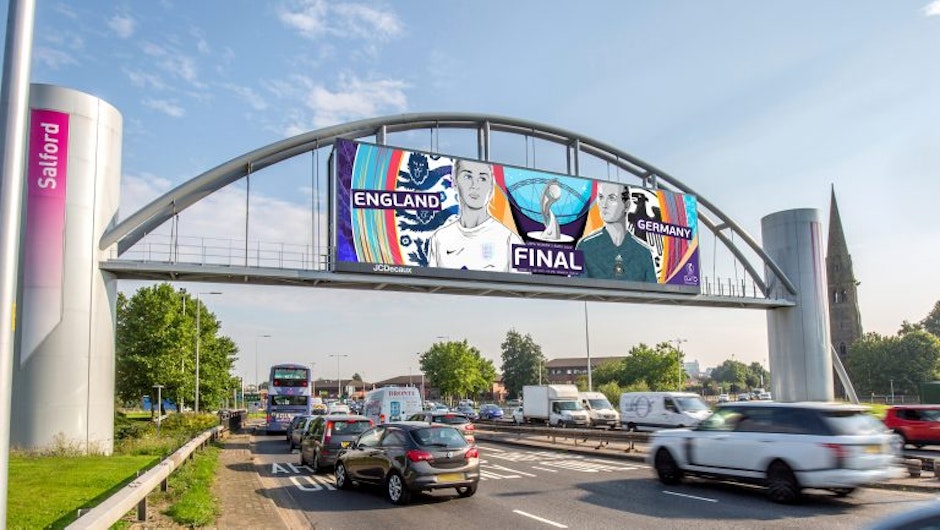3 ways programmatic is shaping the future of brand marketing
Brand marketing is undergoing a revolution spurred by advances in programmatic capabilities in TV, audio, and out-of-home (OOH)

Precision targeting in a one-to-many world
In the face of economic uncertainty during the Covid-19 pandemic, many advertisers sacrificed brand spend in favor of quick wins. What emerged was a realization that investing only in performance channels can damage long-term business results. Today, marketers are once again facing economic uncertainty with the cost of living rapidly increasing. The key to success during these times is understanding how best to connect with consumers, across multiple channels on the path to purchase with the precision and accuracy required to minimize risk, but at the scale needed to achieve and maintain brand fame.
The idea of precision targeting in a one-to-many world is one that offers vast potential but is often misunderstood. Connected TV (CTV), programmatic audio, and programmatic digital OOH (prDOOH) are still one-to-many channels. Where they differ from their traditional counterparts is the data and technology that empowers buyers with more control and flexibility.
The additional audience data that is available through programmatic can be layered onto the campaign as part of the planning and activation processes to enable brands to target specific audiences and deliver the most relevant messages. When you add contextual signals, such as weather, social sentiment, or product feeds, you become much more holistic in your campaign planning.
Integrating online and offline
When online and offline channels are planned and bought within a single demand-side platform (DSP), marketers have a single view of all activity and can then optimize campaign timing, creative, and bid strategies in a holistic way and benefit from incremental cost savings, optimal reach, and better performance.
For example, a retailer may have a nationwide promotion on activewear across both online and offline stores. PrDOOH campaigns can be activated across the country to drive footfall to stores. By integrating a product feed, the creative on those campaigns can be automatically changed as products sell out. From an omnichannel perspective, the same creative that is run on prDOOH campaigns during the day can be re-used for CTV campaigns in the evening, along with store opening times to remain top of mind or repurposed for display and video campaigns to drive online sales.
These programmatic campaigns can either act as standalone OOH and TV strategies or they can be used in conjunction with traditional buys, depending on the available budget, campaign objectives, and target audience. The important thing is that consumers are reached throughout the purchase funnel with messaging that complements the context of the ad placement.
Test and learn
Over the past two years, in the face of unprecedented changes in consumer behavior, adopting a test-and-learn approach to marketing has been vital. Fluctuations in all media environments – both online and offline – and changes in media buying platform capabilities have caused the scope of testing and innovation to expand. For marketers, this means dedicating time and budget to understanding the opportunities available and implement robust testing strategies.
Test and learn campaigns need to be carefully planned and executed against a clear hypothesis while ensuring existing campaigns continue to deliver results. For marketers with a more cautious approach, it is worth focusing on new activities designed to enhance current activities to minimize risk. For example, if you know TV and OOH deliver results, try a complimentary programmatic buy to discover new audiences.
For those with a less risk-averse strategy, now is the time to invest in true innovation – testing entirely new channels, platforms, and audiences. Regardless of which approach you take measurement will be key to determining the success of your new activities. Think about your goals and whether your approach lends itself to your current measurement techniques or if you need to adopt a new methodology.
The future of brand marketing
Before we think about the future, we must remember that the goal of brand marketing will remain the same: to capture attention and influence attitudes and behaviors. The way in which we do that is driven by consumer behavior, mindset, and purchase habits. No matter how advanced platforms get, or how many new channels emerge in the future, the most effective brand marketing is and always will be planned according to the most up-to-date consumer trends.
What we can be certain of is that there will continue to be changes which means brand marketing will continue to evolve. The exact future of all media will be determined by marketers’ answers to three questions:
1) What goal am I trying to achieve?
2) Which channels will best enable me to achieve my goals?
3) What greater good will my campaigns achieve? (Especially important, given the increasing focus on sustainability, diversity, and inclusion).

